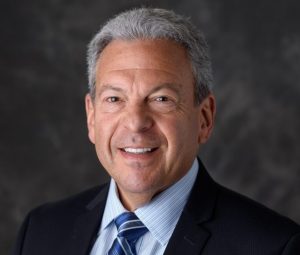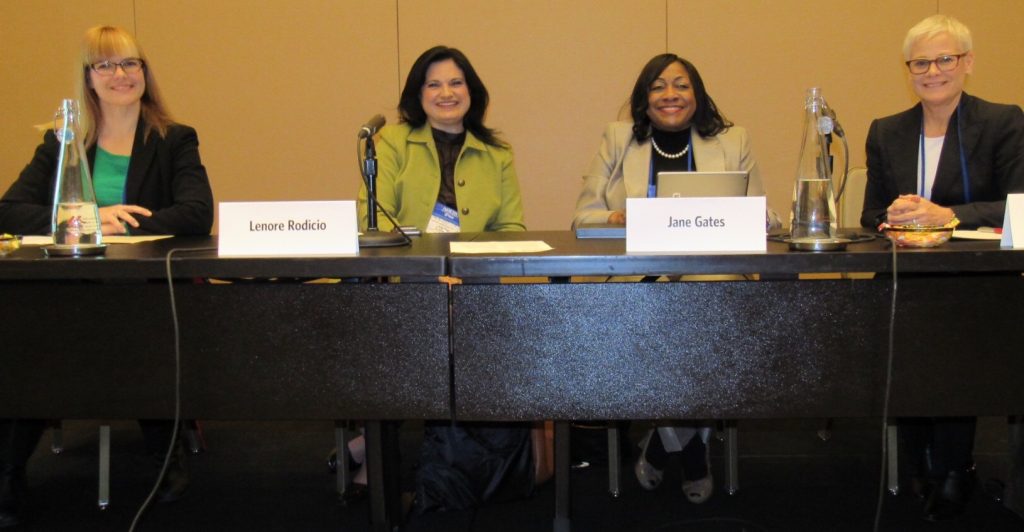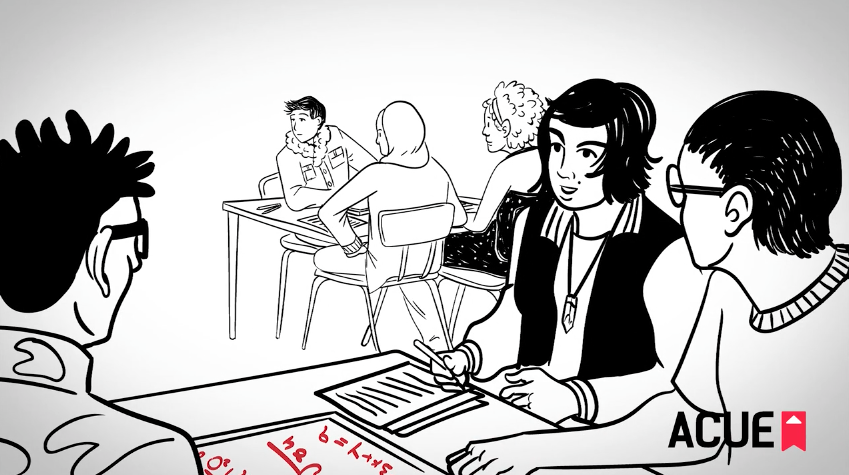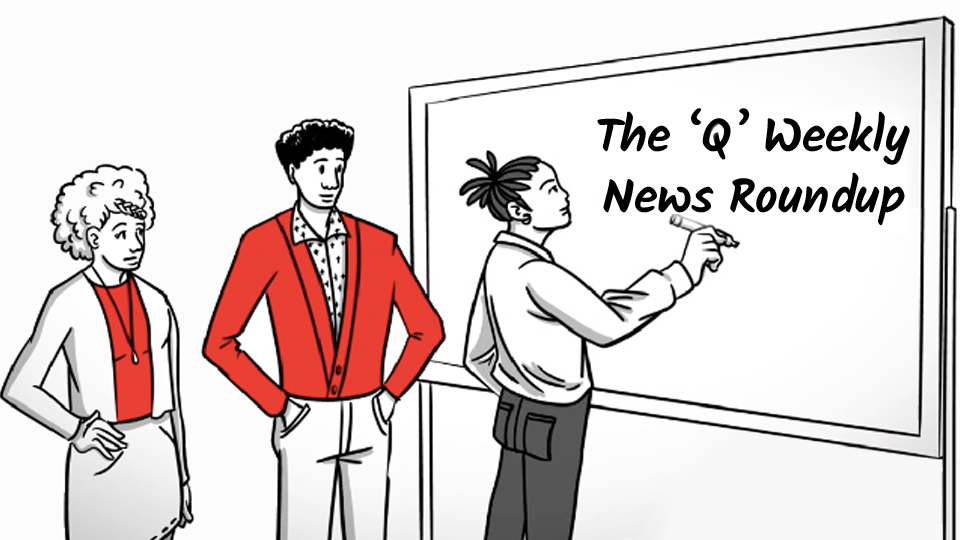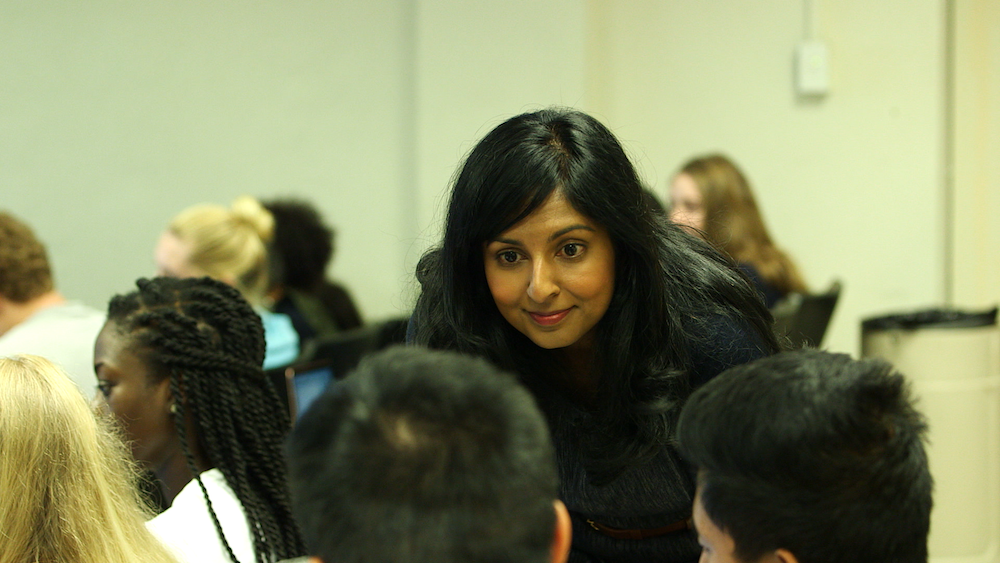
The Sweet Spot of Midsemester Feedback
For Viji Sathy, hitting the halfway point of a course is a good time to regroup with students to hear how things are going. But it’s easier said than done, Dr. Sathy explains in this month’s ACUE Expert Series. The timing has to be just right, and it’s important to respond to students’ midsemester feedback without making dramatic changes.
Dr. Sathy, who teaches psychology and neuroscience at the University of North Carolina at Chapel Hill and is a featured instructor in ACUE’s online Course in Effective Teaching Practices, shares additional insights in the full interview below. Please add your own insights and questions in the comments section!
| For more expert insights, visit ACUE’s Expert Series page. |
What’s the biggest challenge to getting feedback in the middle of the semester?
VS: One challenge to midsemester feedback is simply finding the time and place for it. That’s something I struggle with myself—just figuring out when I’m far enough along in the semester that students have a sense of how things are going, but not so far along that I can’t make changes. So finding that sweet spot is helpful.
One of the ways I encourage new faculty to think about feedback is to find a colleague whom you trust and ask them if they’d be willing to exchange their students’ feedback with you. So you read feedback from their students, and they do the same for you, and then you both report back to one another. It allows the other person, who might be a bit more objective, to summarize what they’re seeing from the feedback with a different perspective.
Video: Reasons to collect student feedback at the halfway mark
What are some of your favorite ways to collect midsemester feedback?
VS: I’ve used the same two prompts for a few years now.
First, I ask students, “What aspects of the course (class, videos, in-class exercises, assignments, quizzes, readings, etc.) do you find helpful? That is, what aspects of the course are working well for you and should be continued as they are?” It focuses students on the learning and resources, and less on me as an instructor.
The second prompt asks, “What changes should be made to the way the course is taught? That is, what can I do differently to make the course a more valuable learning experience for you?”
I put the questions up on the screen and hand out index cards, but I tell students not to put their names on them. I also give them a good amount of time to think and respond, because I don’t want them to be rushed.
After I’ve had a chance to review their feedback and debrief, I make sure to circle back to what they could be doing better to learn the material. Doing so communicates that we are in partnership to achieve a common goal.
I also do a little bit of instruction related to feedback, and I talk about how important it is to give really useful feedback. If you think something is going great, tell me why it’s going great. Offer a reason or an example of something that’s working for you, so that I can use that information more effectively. I find that students often haven’t had any formal or informal instruction on providing constructive criticism, and this can be a helpful way to broach the topic.
How do you determine which changes to make based on the results you collect?
VS: I try to be reasonable about what changes I have time to take on, because I don’t want to bite off more than I can chew. Part of it is also thinking about fairness and not switching midstream in a way that can create a disparity for students. It’s important to be really mindful about any changes you create and how they may unduly affect students.
For me, it’s a matter of seeing if I can have some small wins and if there are little things I can offer that don’t involve a great deal of effort or strain on the course or schedule.
For example, my assignments used to be due at noon on Fridays. But a lot of students said they were in class during the day on Friday, so they had to finish the assignments Thursday night. They wanted more time on Fridays, so we talked about it and made a change to make assignments due at midnight on Fridays. For them, that little change demonstrated I was willing to listen, take their feedback seriously, and change something that would be helpful to them. It is important to do that.
What inspired you to begin taking notes about your teaching?
VS: It was a matter of practicality, actually. There were certain class periods or exercises that weren’t quite working for me, and I knew that if I wrote them down immediately after class was done, I would be much more likely to remember them the next time that topic came up in the next semester. Originally, it was a really crude system. I had PowerPoints every class, and I would put comments in the notes of the title slide, like “this exercise took much longer than I thought it would,” or “think about cutting this out,” or “this is something I should really expand on the next time around.”
Video: Taking notes on your teaching
Now I have a different system, but it’s a similar idea. While it’s fresh, I jot down a few things that will help me improve next time around. Using the online tool Trello, I make a board for each week of the course and add a note about different things to think about that week to each board. They can include revisions to the slides or polls, new examples I identify that I don’t want to lose track of, or copies of emails I’ve sent out to the whole class that week so that I don’t have to craft them again from scratch. The aim is both to improve my teaching and help me be more efficient in some of the administrative tasks for a course.
What’s something that you’ve recently learned about some aspect of teaching and learning that’s excited you?
VS: I’m always experimenting with my office hours. For a while, I’ve had students sign up for a five-minute block and use the time for personal introductions. I usually hold them in a central place on campus and ask that they come prepared with a question for me—and encourage them to ask me anything. I make sure to welcome them to my official office hours should they have course material to discuss, want to talk about future plans, or to simply check in.
Recently, I started experimenting with a bring-a-friend format. I would allow two or three people to sign up for the same time slot of around 10 or 15 minutes. Some students feel more comfortable doing this with other people, and I don’t want there to be any barriers in coming to talk with me.
I’ve also added another office-hours format where I pick a common location and bring a few snacks, and we work together in the same space—a coworking community. Students have taken me up on that, and it’s another informal way for us to connect. Little things like this can foster inclusion and acknowledge that a diversity of methods may be needed for a diverse set of students.

